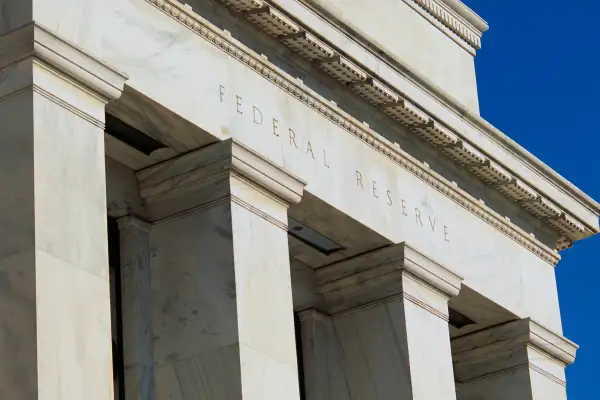The Fed Just Cut Rates to 0%. Here's What It Means for Mortgages, Student Loans, Credit Cards, and More
Money is not a client of any investment adviser featured on this page. The information provided on this page is for educational purposes only and is not intended as investment advice. Money does not offer advisory services.

The Federal Reserve announced emergency steps to help the economy Sunday, as businesses across the U.S. slowed or shut down down entirely ahead of the spread of the coronavirus.
The Fed's moves — which involved cutting the short-term Federal funds rate to between zero and 0.25% and promising to buy $700 billion of longer-dated bonds to help markets function smoothly — don't affect consumers directly. But that doesn't mean you won't soon feel their ripple effects.
With economists worried the U.S. could quickly tip into a recession, the Fed's actions could help prop up the value of your 401(k) and make it easier to pay off your mortgage and credit cards. At the same time, you're likely to earn less on savings accounts and C.D.s
Here's how the Fed's rate cut could affect you:
Your Investments
Usually the stock market rallies when the Federal Reserve cuts interest rates. That's not what happened Monday morning, with the Dow down as much as 10% in early trading. It's a sign of how serious the market regards the current threat. Investors were reacting to uncertainty about a possible economic shutdown. If businesses do temporarily shut down, lower interest rates should still make it easier for them to borrow the money they need to pay employees and vendors until they can re-open, ultimately helping stock prices.
As stock prices sank, bonds rallied, with, for example, yields on the 10-year Treasury note falling 0.15% to 0.85%. (Yields move in the opposite direction as prices.) That's some good news. Last week both stock and bond prices fell at the same time. That's a troubling sign bond markets weren't functioning normally and part of what the Fed is trying to address with its plans to buy longer-dated bonds.
Higher bond prices should offset some of your portfolio's stock market losses. Fund researcher Morningstar said Monday that the average "balanced" fund with a 50%-50% to 70%-30% stock-bond mix was down 12.3% on average year to date, compared to 17% for large company stock funds and 28% for small company funds. (Figures don't include Monday's returns.)
On the other hand, lower interest rates should also mean lower bond fund payouts going forward, making it more difficult for investors, especially retirees, who count on these to meet monthly budgets.
Your Mortgage
For the past several weeks, mortgage rates have been at or near historic lows, and refinancing applications have spiked. As of last Thursday the average rate for a 30-year fixed-rate loan was 3.36%, just a hair above the all-time record low 3.29% rate set the week before. The average rate for a five-year adjustable loan was 3.01%, and for a 15-year fixed loan it was 2.77%. The Mortgage Bankers Association said refinance applications have jumped five-fold since 2019.
In theory, the Fed's rate cut could bring average mortgage rates even lower. Mortgage rates are typically pegged to yields on the 10-year Treasury note, which as we mentioned above, are falling.
But there's no guarantee that will happen. Key mortgage rates actually rose last week, due to problems in the market for mortgage-backed securities, even as stock prices continued to tumble. And it was one of the key reasons the Fed decided to act Sunday, purchasing billions in mortgage-backed bonds, in addition to moving short-term rates lower.
So while homeowners are already benefiting from historic low rates, it's impossible to say whether they are likely to move lower.
Your Credit Cards
Another piece of good news for consumers: Borrowers with revolving loans such as credit card debt should get some relief with lower APRs.
Following the financial crisis, Congress implemented regulations to protect customers from having their credit card rates hiked without any warning. In response, issuers switched their offerings from fixed-rate cards to variable rate cards en masse, which means that the APR you pay can change based on policy moves like rate cuts.
Variable rate credit cards have a rate tied to the prime rate, which is three percentage points above the benchmark Federal funds rate, so the central bank’s weekend move will change the prime rate from 4.25% to 3.25%.
Variable rate credit cards have APRs that are a certain percentage above the prime rate depending on borrower creditworthiness, so people who carry balances from month to month can expect to see their rates drop, according to Michael Moebs, economist and CEO of economics research and consulting firm Moebs $ervices.
But Moebs added that the reduction in your APR might not be as big as you expect, given the size of the Fed’s cut. This is because of how issuers do the math, typically relying on three, six or 12-month moving averages.
Money recently reviewed The Best Credit Cards of 2020.
Your Student Loans
The Fed’s rate cut doesn’t directly affect borrowers who have already left school and are in repayment. (Those borrowers may see some relief from a policy announced Friday that waives the interest on federal student loans.) But it does mean people planning to take out student loans for the upcoming 2020-2021 academic year will get rates that are close to record lows.
Interest rates on federal loans are fixed over the life of the loan. And since 2013, the annual rates on federal loans are set each May, based on the results of the 10-year Treasury note. If student loan interest rates were set today based on recent 10-year Treasury yields, they would be about 3% for undergraduate loans and 5.5% for graduate students and parents.
By comparison, interest rates for the current academic year range from 4.53% for undergraduate borrowers to 7.08% for graduate and parent PLUS borrowers.
For those repaying loans, it is likely the Fed cut will drive down the rates offered by private lenders, which means you could get a lower rate by refinancing your loans into a new private loan. Even before the decision to cut rates to zero, interest rates offered for refinancing were among the most competitive we’ve seen in years. (Note that there are cons to refinancing federal loans, especially in a period of economic uncertainty.)
Your Savings Account
While borrowers stand to benefit, savers will lose out. The dramatic one-percentage point decrease in the benchmark Fed funds rate means that the already-paltry returns you can earn on interest-bearing checking and savings accounts are likely to drop even further.
The growing coronavirus pandemic and the havoc it has wreaked on markets and economies around the globe have already been weighing on deposit account rates, Moebs says. “We have seen deposit rates decline gradually since the president stopped flights from China in January. Deposit rates will decline more rapidly with the current travel and social distance restrictions being put in place,” he predicts.
In general, the lower overhead enjoyed by online banks lets them offer somewhat higher interest rates, so if you’re sitting on cash and want to realize some kind of return on those funds, opening an account with an online bank might be an option for you.



